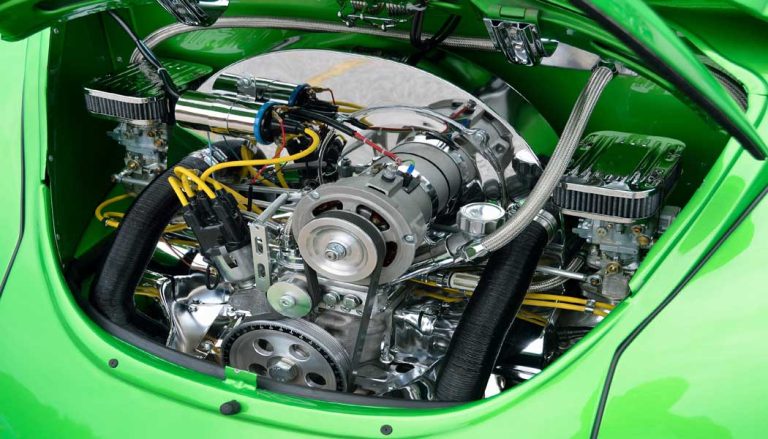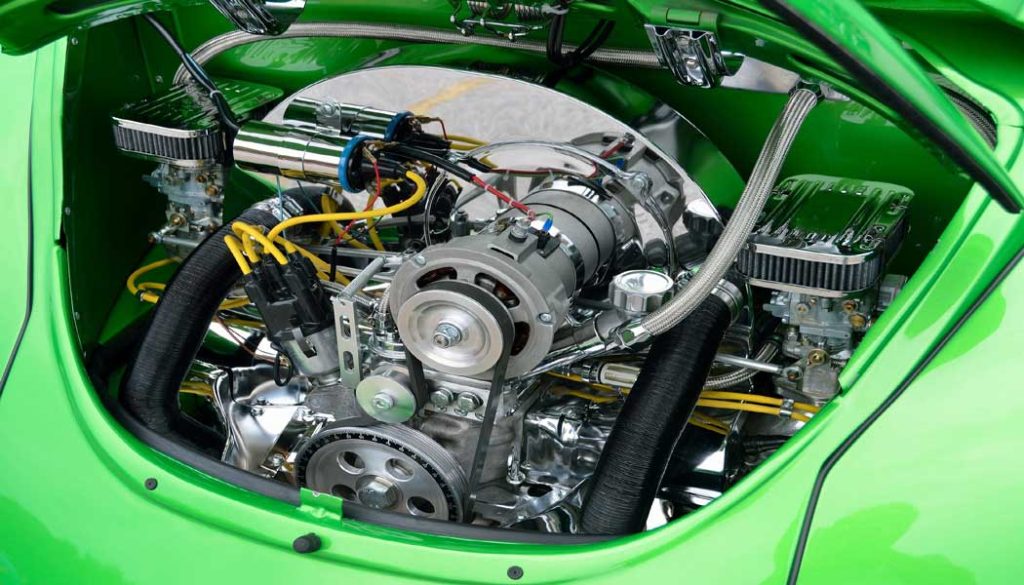
Can You Paint an Air Cooled Engine?
Air cooled engines are surely one of the best inventions to avoid coolant leakage problems. With fewer parts, the machine is lightweight and comes with several advantages. Hence, for having a metal part, you might ask, can you paint an air cooled engine?

Well, painting an air cooled engine to some extent helps improve the cooling efficiency of the engine. However, you need to be selective while choosing the color. The wrong selection of paint and painting method might lead you to a failed situation.
Thus, to know everything regarding the topic, bear with us till the end and enlighten yourself.
Can You Paint an Air Cooled Engine?
As we have already mentioned, painting air-cooled engine is okay. In fact, in some cases, it is proven beneficial for engine efficiency as well. However, professionals suggest using white paint on the air-cooled engine or its mounts, or any other parts.
Nonetheless, you might also think of painting black. But it is the least desirable color to paint your air-cooled engine since it has some other effects.
It is theoretically proved that black paint can emit infrared energy in a better way. Moreover, black paint can absorb energy in a better way. Therefore, good absorbers are also considered good emitters.
When you paint the engine black, it will emit more radiant energy per unit of time compared to other paint colors like white or golden.
Hence, by increasing the amount of total emitted radiant energy through the hot engine, a black painted engine can retain its coolness more than other non-black ones.
However, the color of the paint hardly affects the heat emission of the engine. Rather it is the paint material and its components that are involved in the process of increasing radiant.
Again, there may be some other effects on the engine of the paint. Since the paint is a diffuser when the air-cooled engine fins are painted with it, they are not uncovered to radiation. Therefore, when both the paint and metal are heated, there occurs an economic loss.
Yet, apart from all these, paint is still a better option than air to transfer heat from the engine. So, when it is to this competition, surely, paint wins. So, yes, you can paint an air-cooled engine.
Also Read: Removing Paint From Vinyl Seats
How to Paint an Air Cooled Engine?
Painting an air cooled engine is easy when you know the right ways and the right required materials. For your convenience, we are describing the process step by step.
Step – 1: Remove the Air-cooled Engine
Painting becomes easier when you remove the engine part first. You can get enough space to do the task. But make it apart only when you know how to put it back as well.
Nonetheless, painting is also possible without really removing the air-cooled engine. You just have to be extra careful with that process. Thus, if you are not a mechanic expert then do not think of removing it.
Step – 2: Set Your Engine Outside
If you have already removed the air-cooled engine then keep it on a stool outside. Or if you haven’t separated the part away, then move the vehicle outside. You must have to ensure proper ventilation since the paints and primers can be toxic at times.
Moreover, they will need proper air to dry to touch, and cure. Again, if you are not removing the engine then you might not have to paint the bottom part of the engine. Since nobody is going to see it, so it is okay.
Step – 3: Clean the Air-cooled Engine
The next task is to clean the engine properly. There must be built-up oil and surface grime on the engine that you need to clean first. You can use a cloth or brush for cleaning purposes. Better you go for a stiff-bristled brush to scrub off the grease and oil from the engine surface properly.
Wipe the engine around with a thick and clean cloth so that no exposed portion remains grubby. You may need to wipe the engine 4 to 5 times until the surface really gets smooth enough for the paint to adhere.
However, to deep clean the engine, you can also use a degreaser. Do not leave any nuts, bolts, knobs, or valves to clean up as well.
Nonetheless, after using the degreaser make sure to clean up the residue as well by rinsing it properly. Then wipe the excess water using a dry rag. Also, leave the engine for one hour to let it dry.
Step – 4: Mask the Important Parts
Since you are not removing the engine, you need to cover other parts and components of the vehicle like ports, nuts, and all. You can use masking tape or painter’s tape for this purpose.
However, to cover larger individuals you can use trash bags or plastic drop cloths. Covering stuff may take some time. But the step is necessary since you do not want to spill paint on unwanted parts of your vehicle.
Step – 5: Prime the Air-cooled Engine
Now it is time to prime the engine. You must use a vehicle primer that is heat-resistant. It will not allow the paint to melt down while overheating.
Just spray the primer making back-and-forth strokes on the engine surface. Obviously, keep a distance of about 20 to 30 cm while spraying. Otherwise, there will be chances of dripping the primer.
However, priming is important if you are up to painting a sheet metal. Also, it allows the paint components to adhere to the engine surface.
Step – 6: Let the Primer Dry
When you are done applying the primer, let it dry. It may take a few hours like 1 to 2 hours to dry. Without letting the primer cure properly, you cannot apply the paint.
Again, you can apply additional coats of primer if you find an uneven surface.
Step – 7: Paint the Air-cooled Engine
When the primer cures, it is time to apply the paint. Use engine enamel for painting. These are good and heat-resistant. Hold the spray nozzle and apply the same way you did for applying primer.
Keep a certain distance and apply an even layer. After covering the parts uniformly, let the paint rest for one day before applying additional coats.
Nonetheless, this way you can apply 2 to 3 coats of paint. Just let the paint dry to touch and then let it cure.
Step – 8: Remove All Masking Tapes
When you are done painting, consider your task completed. Now, uncover all the parts you have covered before.
Again, if you have separated the air-cooled engine from your vehicle then reassemble it to the vehicle properly. Now, you are done!
Continue Reading: Can You Paint a Fiberglass Spoiler?
Does Painting an Engine Make It Run Hotter?
Well, painting an engine hardly brings such differences. It is barely responsible to change the radiant frost of your engine. Rather this fact is more likely to be dependent on the fact that the vehicle is simple or advanced.
For your information, less than about 5 percent of energy is absorbed by the air that is generated from engine radiation.
Is Painting an Air Cooled Engine Good?
Yes, and to some extent, it is beneficial as well. But you have to select the right paint. Typically, a glossy and solid finish is suggested to make the painting last longer. The paint has to be heat-resistant. Hence, professionals suggest enamel. Moreover, it comes with extreme air-conditioning properties.
Learn How to Paint an Air Cooled Engine:
Final Thoughts
Now that you know you can paint an air-cooled engine, get started with yours. Painting the engine is easy. It also offers some facilities and looks good as well.
However, make sure to use a spray gun rather than a brush to paint the engine. So, paint your air-cooled engine to get better performance and a better look.
